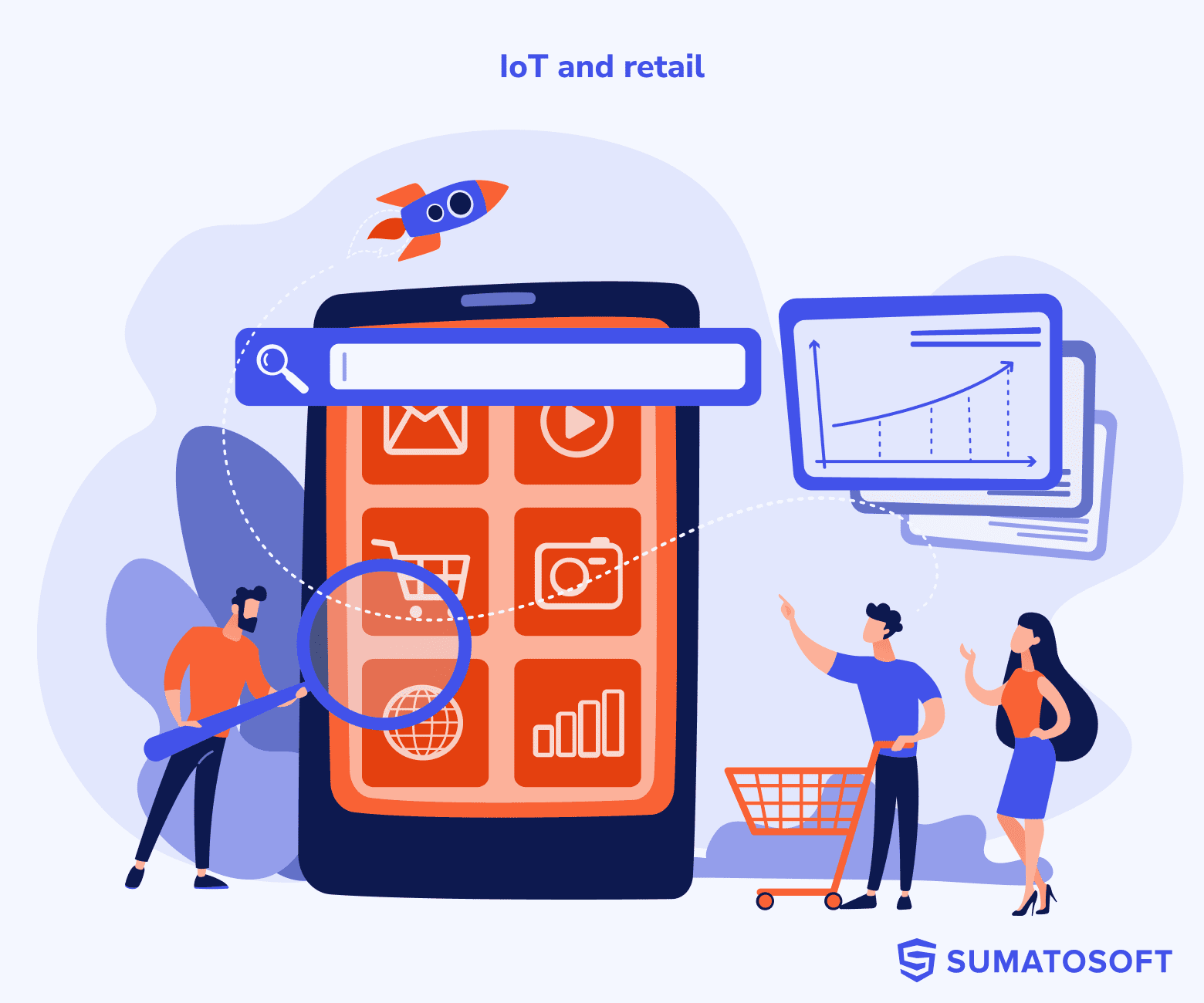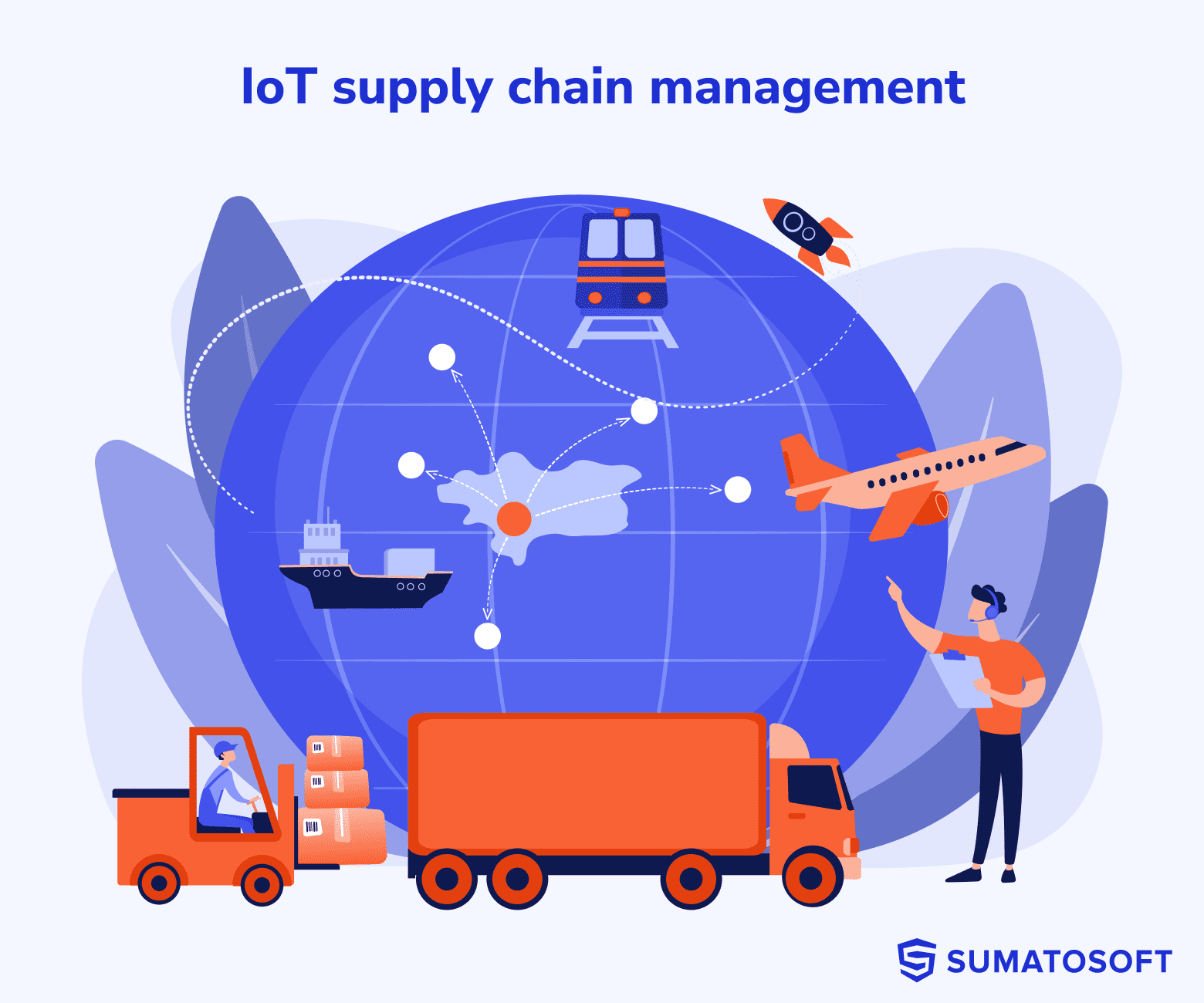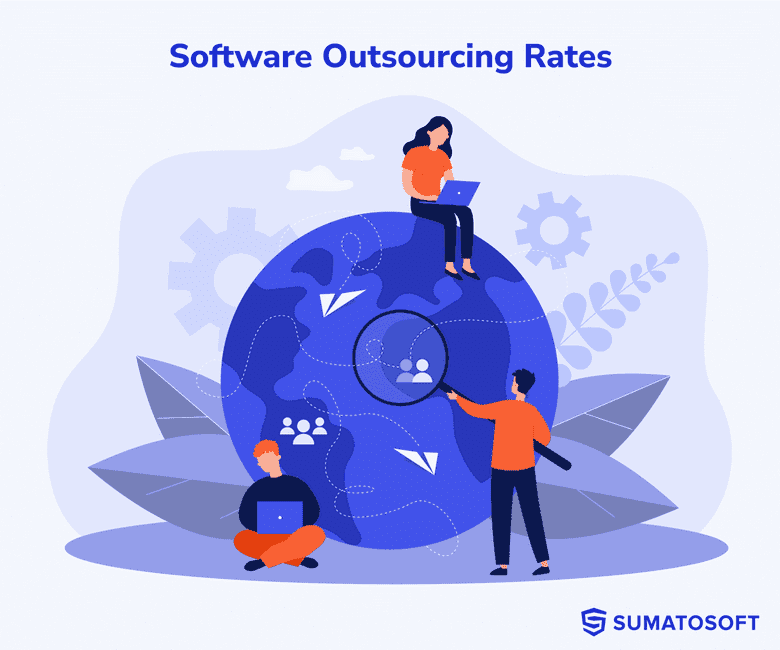How to Choose the Best Software Development Model For Your Project


Building on fresh ideas is now a lot simpler for expanding businesses because of the variety of well-known and well-described methodologies at their disposal. We refer to these methodologies as software development lifecycle models. These models enhance your software project’s workflow and results. The various software development models seek to organize work teams so that they can implement software development processes as effectively as possible.
The process or framework selected for software development needs to be detailed and should function best with your team for an efficient plan and relevant results. Statistically, 25% of software initiatives fail for various reasons, including an inexperienced developer, a time limit, low quality, minimal user interaction, and vague requirements. Therefore, the development team should consider factors like the experience of the developer, user requirements, time, and complexity of the project while selecting software development models for your project.
Image Source: phoenixnap.com
All software development models have unique formats, strategies, and methods. So, how can the optimal methodology be chosen for particular projects? Should businesses use more than one methodology depending on the kind of project? This article is intended to answer these questions. Business analysis services from experienced developers can help you to pick the most suitable model for you. In case you simply want to gain specific knowledge about software development models, this article is for you. This article contains a quick rundown of the ten software development models and the advantages, complexity, cost, and delivery time for each model. Our expert team at SumatoSoft has also compiled a comparison table for each model used in project development to see which would work best for you.
How to Choose the Best Software Development Model: Choice Criteria
Choice Criteria, Brief overview:
- Cost
- Development speed
- Delivery frequency
- A possible number of defects in the model
- Project complexity
- The popularity of the model
All software development models are divided into different categories. They are distinguished based on whether they use linear or iterative workflow organization methods and the interactions they create between the development team and the client. For example, the waterfall model and V-model take a sequential flow because they are simple to use, implement and maintain. Software development models like spiral, iterative, and increment are less rigid and offer flexibility when software requirements evolve. Whereas software development models like scrum and Kanban actively involve clients at various stages of the software development life cycle. This concept is depicted in the chart below:
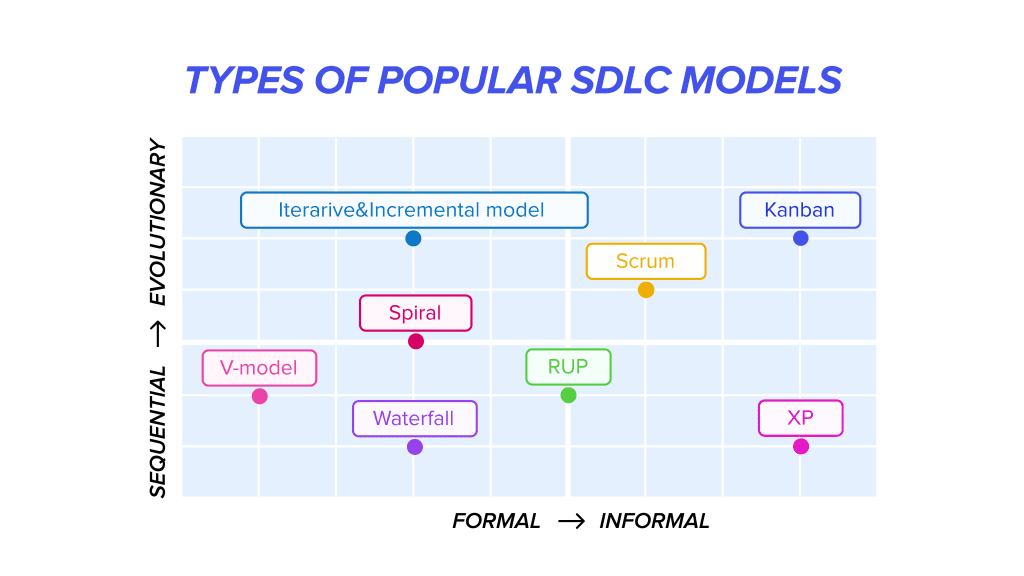
According to a report by digital.ai, about 86% of software development departments of various organizations have adopted agile methods and principles. Digital.ai is a US-based leading technology company committed to assisting 5000 businesses globally in achieving their objectives for digital transformation. Their enhanced platform enables large, complex organizations to succeed in the current digital market by fusing agile planning with software delivery and end-to-end intelligence.
Agile methodology’s most significant advantage is that mistakes, flaws, and inconsistencies are detected early in the development phase. However, every methodology has unique formats, strategies, and methods. Each of them has a variety of minuses in addition to strengths. So when your team embarks on a journey to shortlist software development models for a particular project, ensure that your team carefully puts fundamental project requirements on the table. All software development models fail to help you if your aim is to build a complex project without bugs at a low cost.
To help you with this, we have set some criteria elements to fill against each software development model. The criteria items include cost, development speed, delivery frequency of the model, allowed number of defects, project complexity, and the model’s popularity. A brief description and values of each criteria item are given below, which can assist you in finding the model that matches your desired values most.
Cost
Cost estimation for software development models is intrinsically tricky because every project has different criteria and end goals. The overall complexity of a project is the most important aspect determining the final cost of the software development model. The sample values for the cost section in this article are described below.
Sample values:
- Low ($<10.000)
- Moderate ($<150.000)
- High ($>150.000)
Development Speed
According to GoodFirm’s statistical analysis, 61.60% of the development companies set an average time of 4-6 months for software development. Development speed is the time needed to market a thought process or an idea. The sample values for the delivery speed of software development models in this article are mentioned below.
Sample values:
- Low (12 months)
- Medium (6 months)
- Quick (3 months)
Delivery Frequency
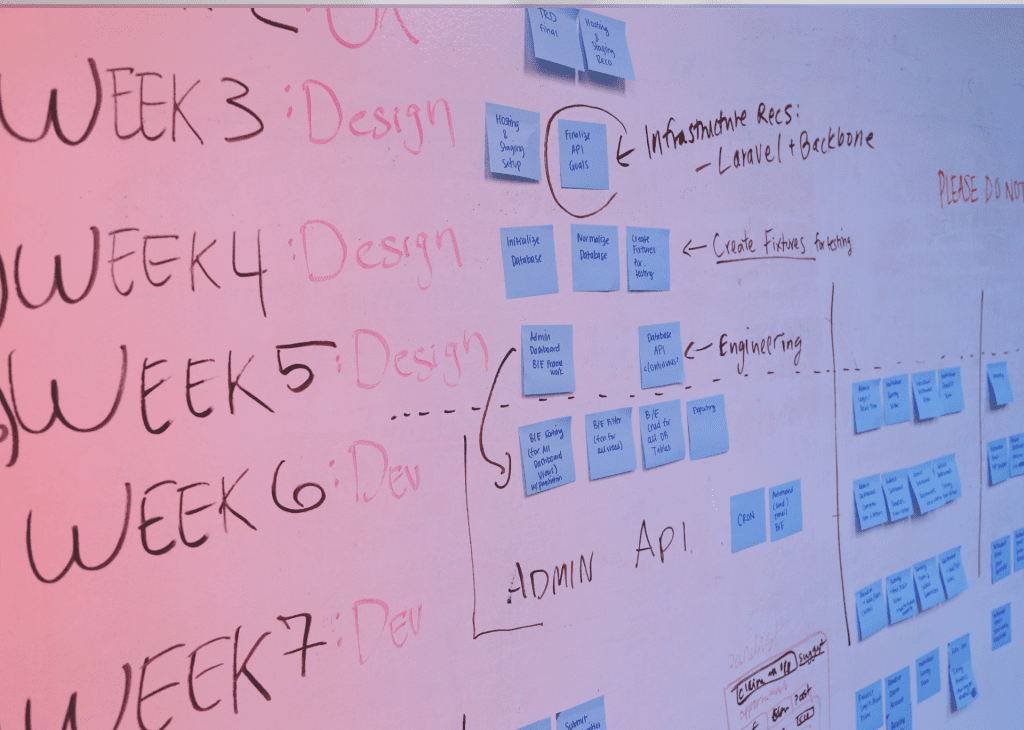
The time taken by a software development model to complete an iteration or cycle of development and release working functions, is usually known as delivery frequency. It varies for every model, and sample values used in this article are given below.
Sample values:
- Weekly
- Monthly
- Once
- Continuous delivery
A Possible Number of Defects In the Model
The defect is any deviation of a software or application from the specifications listed in the product functional specification document. The possibility of defect occurrence depends on the efficiency of the software development model in performing inspection and testing. The efficiency, in turn, depends on the budget for quality assurance services.
Sample values:
- Minor defects are possible
- Functional defects are possible
If you don’t plan to invest in quality assurance services, we recommend at least getting acquainted with QA guidelines and myths.
Project Complexity
Various attributes focus on evaluating project complexity. These attributes include time, cost, size, quality, functionality, risk management, communication, and procurement management etc. Changeability in requirements also plays a big part in making a project complex. Sometimes, customer change requests led to the need to redo some functionality, which could increase risks and costs. Complex projects necessitate comprehensive project management strategies to deliver high-quality end products. Moreover, business analysis is a treasure trove for complex projects since it helps to identify risks, think out the system architecture, define the scope of work, and much more.
The sample values for this criteria are mentioned below.
Sample values:
- No complex Logic
- Middle Complexity
- Huge and Complex App
The Popularity of the Model
The most widely used development approaches, according to GoodFirms, are Agile (61.5%), Scrum (21.3%), and Waterfall (9.6%). About 5.8% of businesses also employ different software development models to accomplish their objectives. The level of popularity refers to how effectively development companies adopt a model and if it is still evolving to be a successor. Sample values:
- Low
- Moderate
- High
Let’s Find The Most Suitable Software Development Model For Your Project
The factors such as size, complexity, and particular requirements of your project contribute highly to determining the appropriate software development models to use. You must assess the advantages and disadvantages of each software development paradigm in light.
You are advised to look through the criteria we mentioned earlier. After a thorough review, pen down your desired values for every criteria. If you find some criteria irrelevant, skip it. Then, carefully read the section below and find the model that fits your desired values most. This practice will help you in the selection process.
According to GoodFirm’s latest statistics, software development typically costs around $36,000. So, before investing this much in your ideas, ensure you know what is best for your company. A list of 10 popular software development models, each with its characteristics and criteria values, is mentioned below for your understanding.
Waterfall
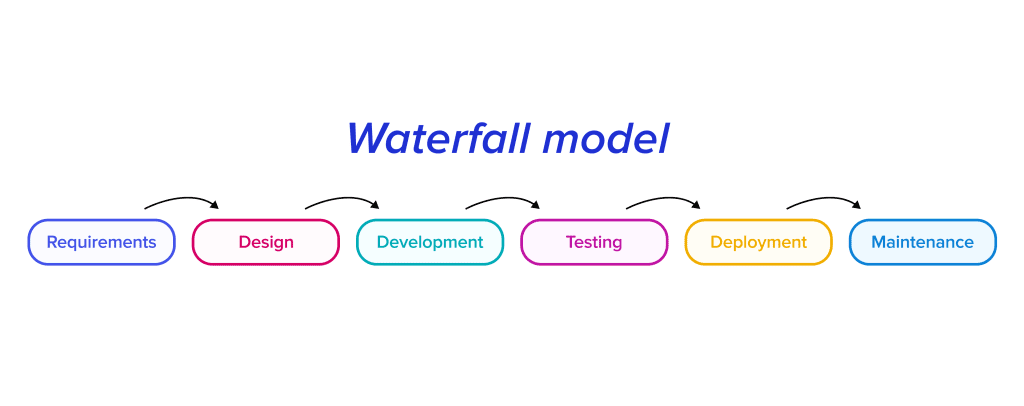
The Waterfall model is the earliest and most linear software development model. In waterfall methodology, the preceding phase must be completed, validated, and documented before the subsequent one can begin. The minimal and rigid nature of the Waterfall leaves little possibility for adaptation and flexibility. There is less reworking because each phase is distinct and finished within a specific time. The criteria values for this software development model are given below:
Cost: High ($>150.000)
Development Speed: Low (12 months)
Delivery Frequency: Once
A Possible Number of Defects Using a Model: Functional defects are possible
Project Complexity: Middle complexity
The Popularity of the Model: Low (A research report from a project management institution in 2017 stated that 51% of firms still employ the Waterfall methodology, but it is not popular among existing development companies).
Spiral Method
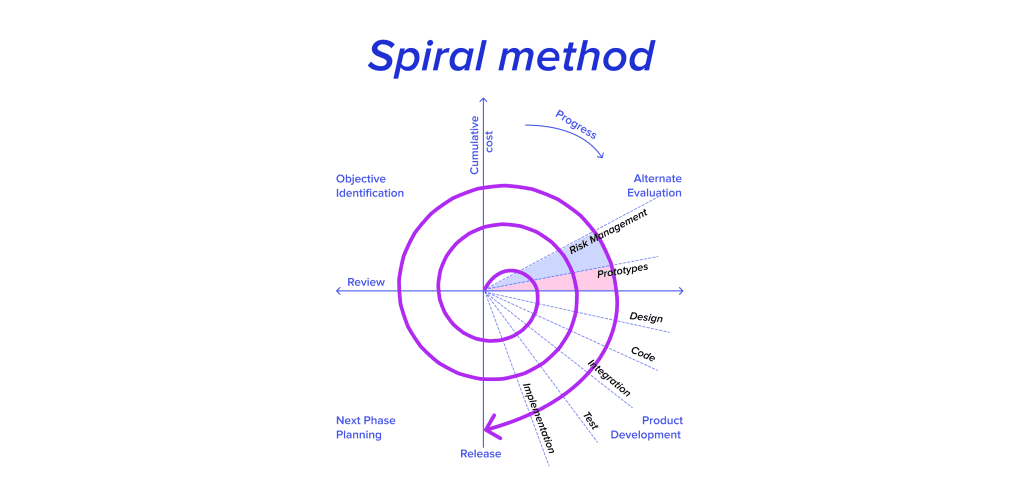
The spiral model places the most significant focus on risk analysis. It produces projects in spiral-shaped iterations. An average spiral iteration lasts about six months and begins with four crucial tasks: careful planning, risk analysis, the development of prototypes, and evaluation of the previously delivered section. The consumer provides feedback after evaluating the delivered section, which leads to a new iteration.
Cost: Moderate ($<150.000)
Development Speed: Medium (6 months)
Delivery Frequency: Monthly
A Possible Number of Defects Using a model: Minor defects are possible
Project Complexity: Middle complexity
The Popularity of the Model: Moderate (The model is ideal for complicated concepts and complex projects that may undergo revisions due to ambiguous needs).
V-model

The V-model is an expanded version of the Waterfall model. It is also referred to as the verification and validation model since it incorporates testing at each stage. V shape is generated when each step of the development lifecycle (verification) is coupled with the equivalent testing stage (validation).
The main advantage of the V-model is that it has a set structure in which each stage is completed one at a time making it simple to comprehend and use. The clear deliverables and stage-by-stage reviews make this model simple to handle. However, this model is inflexible when it comes to changing requirements and significant expenditures are required to implement those changes since new development costs are incurred.
Cost: High ($>150.000)
Development Speed: Low (12 months)
Delivery Frequency: Once
A Possible Number of Defects Using a model: Minor defects are possible
Project Complexity: Huge and Complex App
The Popularity of the Model: Moderate (Unsuitable for projects with unclear needs and a high chance of changing requirements)
Iterative and Incremental
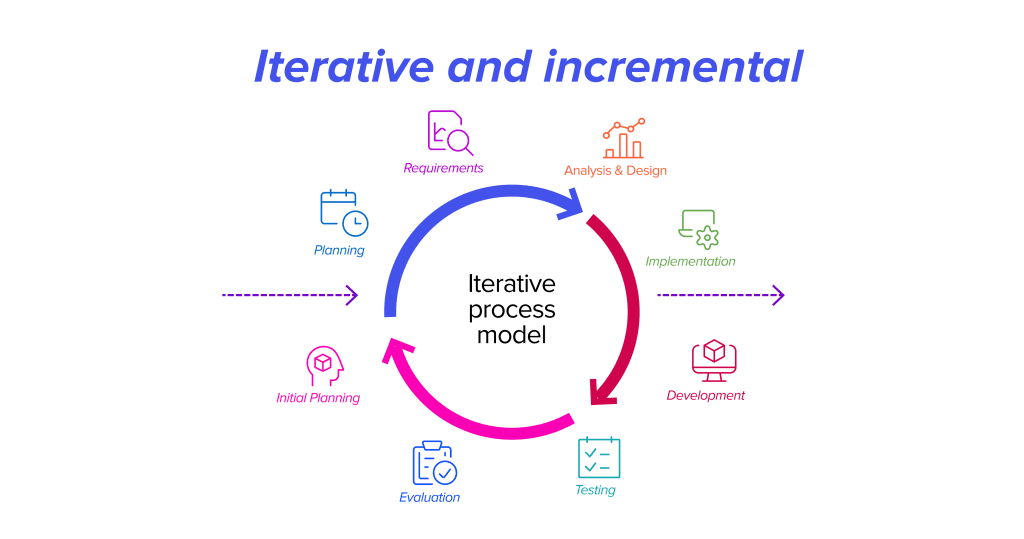
In an iterative and incremental model, the entire project does not have to be planned out in advance. Instead, divide the procedure into four key steps. Each stage can be fully planned out, then designed, created, and delivered before moving onto the next one. A few requirements are first implemented in one or more iterations or increments in the iterative and incremental model. The later rounds of iterations enhance the program with more advanced capabilities until the desired software is produced. With this method, the team can evaluate the final product after each increment, pinpoint its flaws, and make the necessary improvements.
One of the advantages this model offers is increased flexibility as modifications can be made at any phase. However, implementing significant changes is expensive and time-consuming. Testing at every level makes it simpler to find faults and apply changes.
Cost: Low ($<10.000) – High ($>150.000)
Development Speed: Quick (3 months) – Medium (6 months)
Delivery Frequency: Weekly-Monthly
A Possible Number of Defects Using a model: Minor defects are possible
Project Complexity: Middle complexity – Huge complex Apps
The Popularity of the Model: High
The Rational Unified Process (RUP)

Iterative and linear frameworks are both combined in the Rational Unified Process (RUP) model. This methodology is primarily concerned with delivering effective, high-quality solutions that adhere to the allocated spending limit and timeline. The four phases named as inception, elaboration, construction, and transition, are included in the software development process of the rational unified process model.
Inception: This stage starts by visualizing the main concept.
Elaboration: The architecture and use cases are created.
Construction: The processes to transform design into end product.
Transition: After-action measures to guarantee client satisfaction.
The implementation of this model is quite difficult despite it being flexible and excellent at lowering risk. You will want a group of highly skilled developers who are confident in their ability to handle this model.
Cost: Moderate ($<150.000)
Development Speed: Medium (6 months)
Delivery Frequency: Once
A Possible Number of Defects Using a model: Minor defects are possible
Project Complexity: No complex Logic – Middle Complexity
The Popularity of the Model: Moderate (RUP aids in the development of reliable yet adaptable solutions, although it is still slower and less flexible than the pure agile group (Scrum, Kanban, XP, etc.).
Extreme Programming (XP)
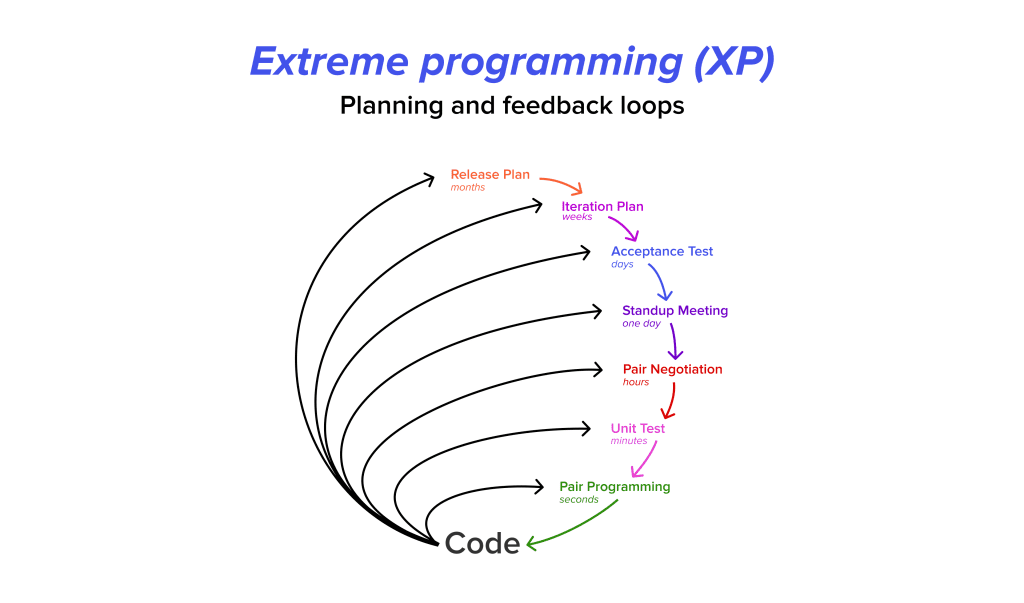
Extreme Programming, sometimes known as XP, is an agile development process that aims to create and manage projects with effectiveness, adaptability, and control. Extreme programming technique lets you make changes even after an iteration has started. One iteration typically takes one to two weeks to complete.
Phases:
- Planning phase prioritizes user stories and divides them into smaller versions.
- Encoding phase focuses on working on a simple code to transform it into a working prototype.
- Testing involves checking all mini versions of user stories to test if they fit the client’s needs.
- Launch involves customers and project managers in describing the intended value and business reasoning.
Cost: Low ($<10.000) – Moderate ($<150.000)
Development Speed: Medium (6 months)
Delivery Frequency: Weekly-Montly
A Possible Number of Defects Using a Model: Minor defects are possible
Project Complexity: Middle complexity
The Popularity of the Model: Low
Scrum
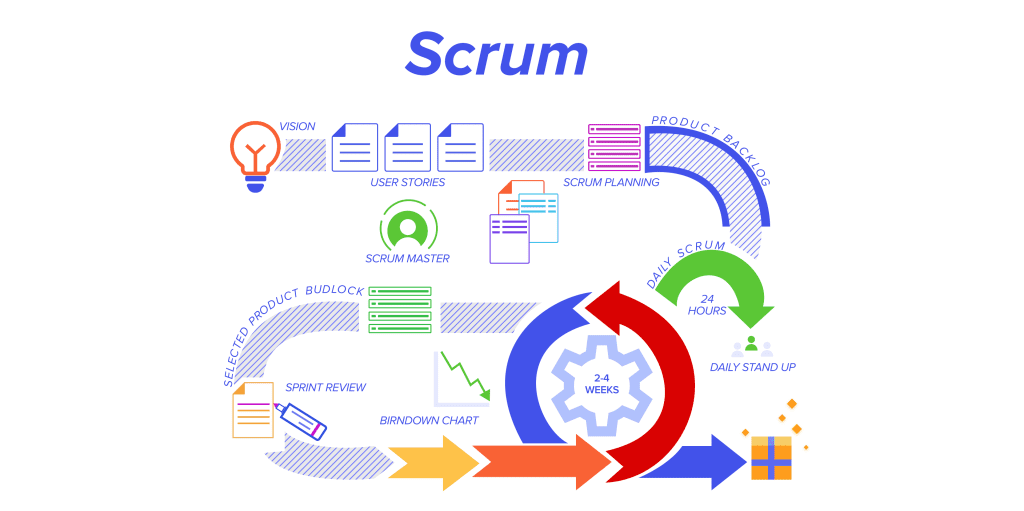
In the Scrum model, sprints are used to accomplish project activities because they are brief, manageable, and well-prioritized, making it simple to monitor progress. Scrum is considered one of the most popular agile methodologies. The iterations (or “sprints”) last between two and four weeks and are preceded by careful preparation and evaluation of the preceding sprint. During the one-month time of sprint, the development of a potentially deliverable product takes place.
The Scrum model provides the benefit of freedom to adjust requirements as you go. Scrum places a strong emphasis on communication, which makes expectations much clearer and simpler to meet.But, daily reports and meetings might take a lot of time.
Cost: Low ($<10.000)
Development Speed: Quick (3 months)
Delivery Frequency: Weekly
A Possible Number of Defects Using a Model: Functional defects are possible
Project Complexity: Middle Complexity – Huge and complex applications
The Popularity of the Model: High (The fact that developers feel committed to the goals makes this technique superior to other software development models for larger projects).
Kanban

Kanban is a practical choice for software applications that need continual maintenance and enhancement. It offers the same advantages for small delivery teams as Waterfall and can be used on top of other software development models. Kanban focuses on producing high-quality software rather than project management and planning. Skyscanner’s principal product manager, Rik Higham once said that he found the flexibility and capacity of Kanban to adjust to shifting demands and priorities the most beneficial.
A Kanban Board tool clearly displays all project operations, their quantity, accountable parties, and progress. This improved transparency aids in more precise estimation of the most important activities. The paradigm lacks a distinct planning phase, allowing for the constant introduction of fresh modification requests.
Kanban is an ideal choice when you require a model that ensures an efficient development process and there is a need to continually improve the system.
Cost: Moderate (Kanban cost can vary depending on the nature of the project or the need of the business)
Development Speed: Continuous delivery
Delivery Frequency: Weekly-Monthly
A Possible Number of Defects Using a Model: Minor defects are possible
Project Complexity: Middle Complexity – Huge and complex applications
The Popularity of the Model: High
DevOps
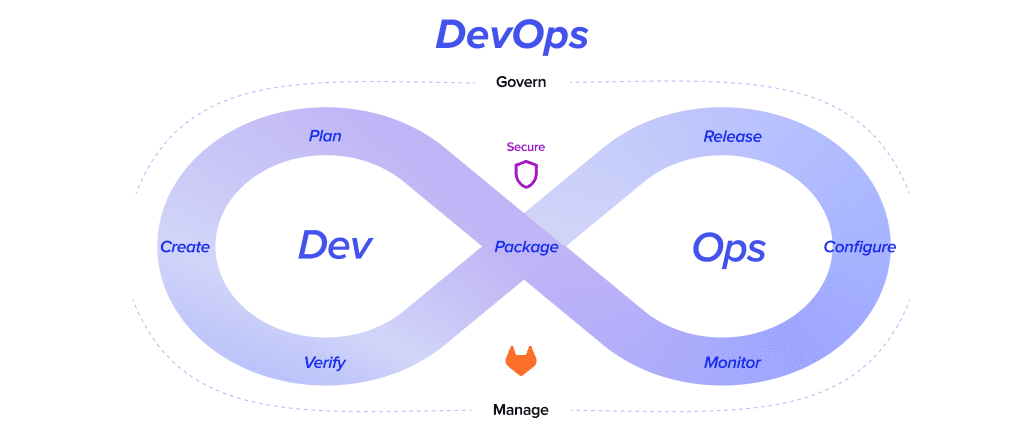
Continual innovation, agility, and scalability are factors that serve as the foundation for the DevOps software development lifecycle model. This strategy is appropriate for bigger, more intricate projects that demand a stronger quality assurance and testing focus. The DevOps model primarily emphasizes teamwork instead of working with clients. The DevOps model differs from agile methodology because it places more emphasis on manager and technical team communication than on customer involvement.
Cost: High ($>150.000)
Development Speed: Continuous delivery
Delivery Frequency: Weekly-Monthly
A Possible Number of Defects Using a Model: Minor defects are possible
Project Complexity: Huge and complex applications
The Popularity of the Model: Low, but it’s becoming more and more popular
Shape Up Method (a black horse)
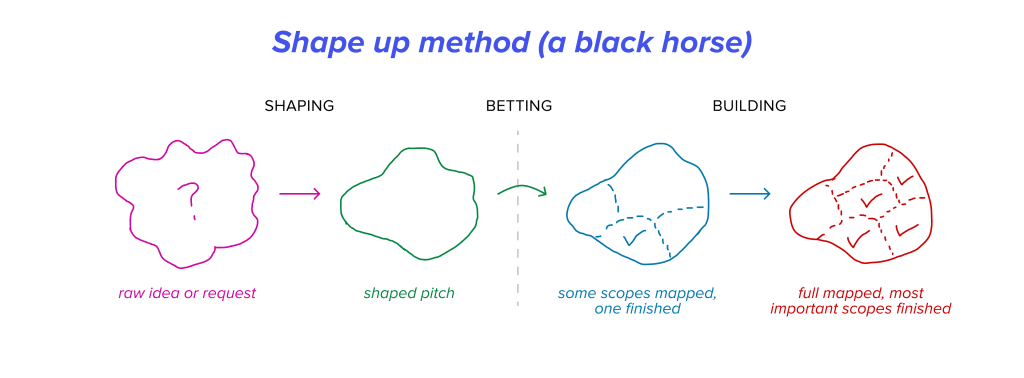
The Shape Up method details the precise steps taken by product development teams to design, test, and construct useful products. The Shape Up method has a six-week work cycle to complete a project from beginning to end.
Cost: Moderate ($<150.000)
Development Speed: Quick (3 months)
Delivery Frequency: Weekly
A Possible Number of Defects Using a Model: Minor defects are possible
Project Complexity: Middle complexity
The Popularity of the Model: Low
The Most Efficient Software Development Model: Final Comparison

Pick Any Software Development Model With SumatoSoft
We have a talented software development team ready to bring your application to a new level! After more than 10 years on the market, we have become a reliable technical partner to our clients. Among more than 150 projects we undertook, 98% of our clients were satisfied with the quality of the custom software development services we provide. And 70% of our clients come back to us with another project.
We have more than 150 successful projects in our portfolio in various industries like eCommerce, Elearning, Finance, Real Estate, Transport, Travel, and more.
At SumatoSoft, we help companies to digitalize their businesses by providing relevant software solutions and focusing on transparent cooperation. Contact us, and we will tackle your projects in days!
Conclusion
A thorough awareness of the distinctions between all software development models mentioned in this article can help you increase the likelihood of your project’s success before it even gets started. During the requirement gathering stage, determining the appropriate model is essential to verify whether your requirements are specific or general, whether your technology is tried-and-true or cutting-edge, team size, and other factors. If you need assistance with business analysis services to choose the appropriate software development model, then SumatoSoft can help. Our IT business analysts guide you through the business analysis phase so you can move directly into the product development phase without running the risk of being unclear or missing deadlines.
Let’s start
If you have any questions, email us info@sumatosoft.com
